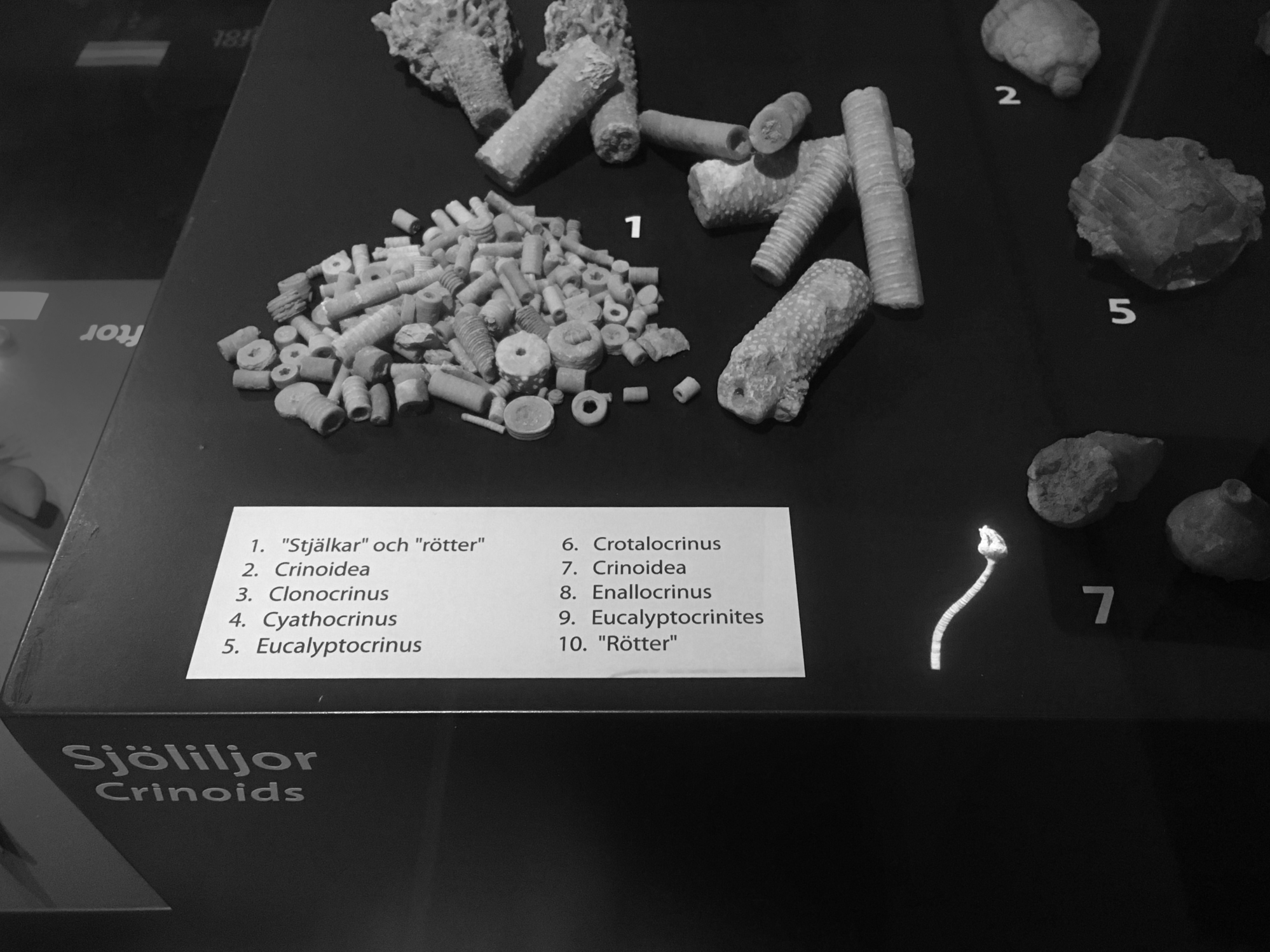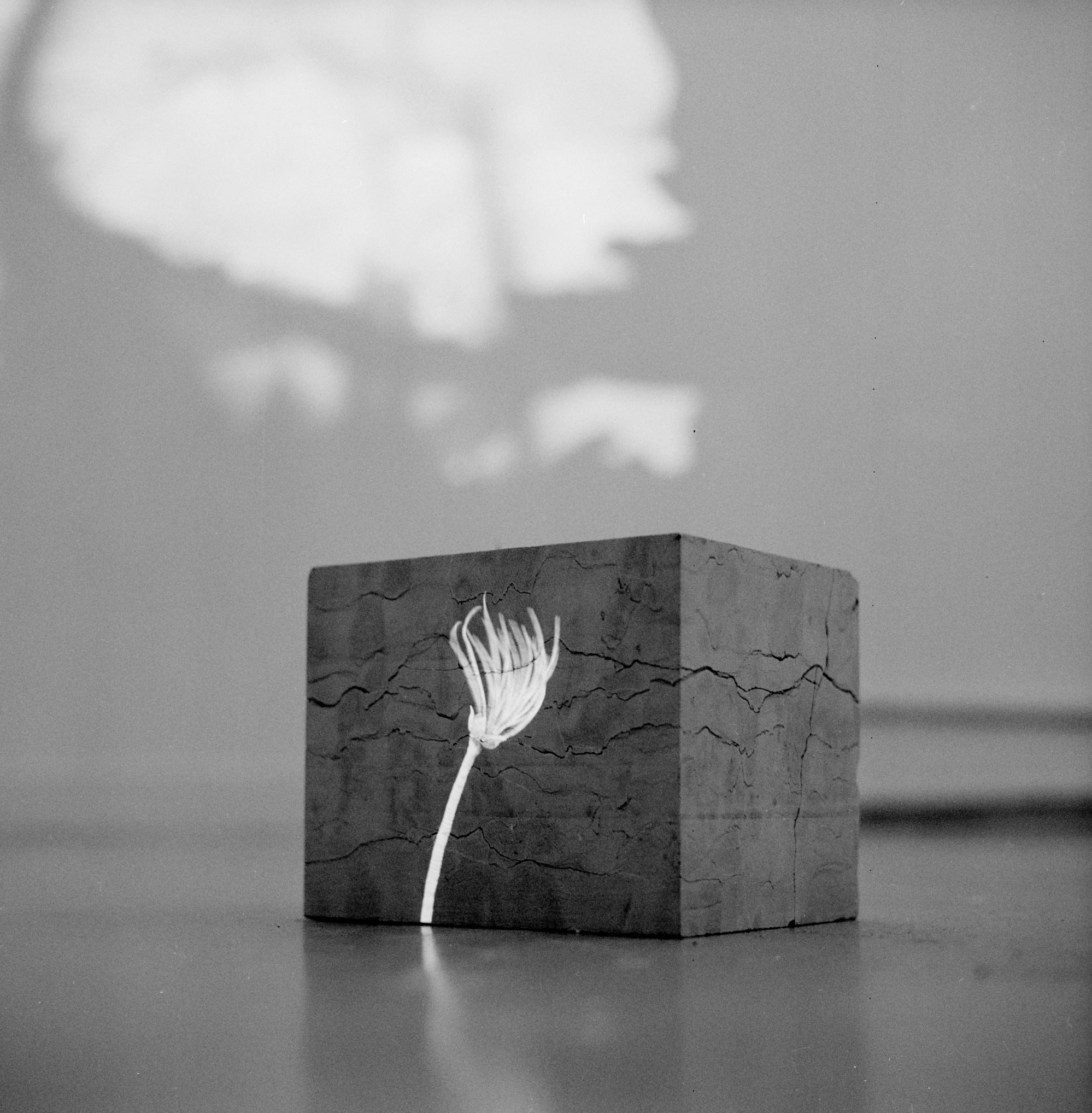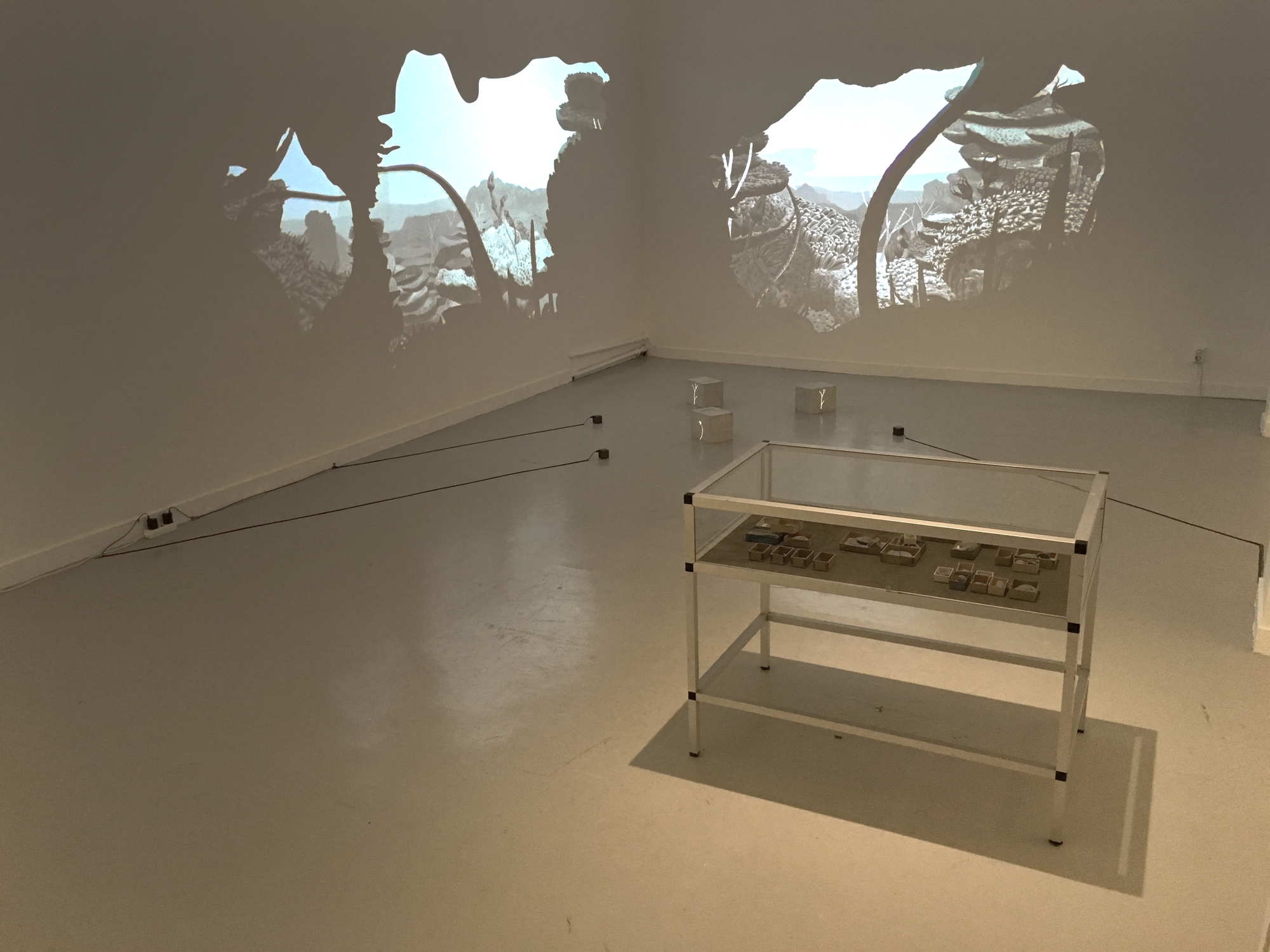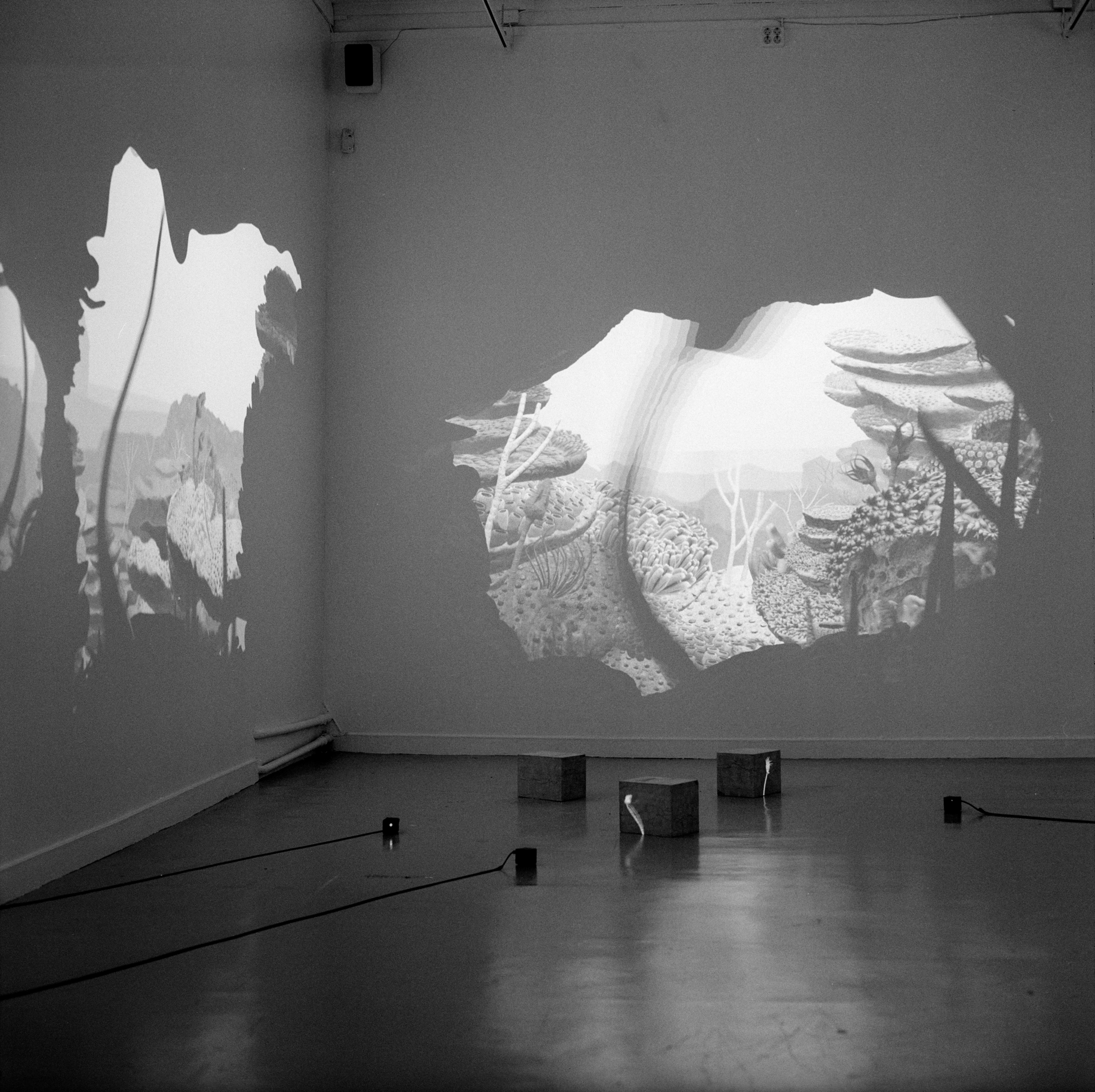ULTIMATE LIMITS, Konstmuseet Gotland.
October 2017 - January 2018
The installation Return of the Silurians at the Gotland Art Museum and the Gotland Natural History Museum stages four different phases of resurgence, re-animation. From dead petrified fossils to soft clay imprints, to animated clay.
In a glass vitrine borrowed from the natural history museum, clay imprints has taken the place of fossils in the archive boxes. Projected on the walls are animated underwater landscapes remenicient of the natural history museum diorama. The landscape is put together by the animated clay imprints. On the floor are three limestone blocks, cross section of the Gotland coral bedrock. They form the projection surface for three more re-animated reef organisms. In the fossil exhibition at the museum of natural history an animated Crinoid (sea lily) is projected.
The island Gotland started forming over 400 million years ago during the epoch Silur. The bedrock was built by coral reefs, one meter per thousand years. Slowly, an island rose from the sea while its continental slate slid north towards a cooler climate.
In 1970, the fictional creature the Silurians was featured in the science fiction television series Dr Who. In the episode an underground nuclear power plant accidentally wake up the revengeful creatures who have been in hibernation deep in the bedrock for millions of years. They act as revenges of the earth, taking up the struggle with humans as they exploit the earth too hard. The Silurian creatures personalize and derive from the geological era that created the bedrock of Gotland.
Today it also forms the economical foundation for the island, through the extensive mining industry that digs deep through layers of millions of years of secrets.
At the limestone factory in Slite I walk around and look for stone with the correct surface and the grayness for use in my installation. The limestone industry that took off in the 17th century brought a new class society; the stone workers & landowners . Then the stone was quarried by hand with simple tools. Now the market is dominated by Nordkalk & Cementa, which operates in large scale industrialized mining that leave large holes in the bedrock.
The rate at which we consume natural resources is in stark contrast to the pace they reproduce. This imbalance is the basis of human-induced (anthropogenic) climate change.
In the collection of the natural history museum I studied Gotland fossil from the silur epoch. Fossil can be both negative and positive imprints from the original plants or animals. I use clay to make new imprints of the different structures. The clay imprints are soft & flexible, possible to animate.
Today we see more and more of the big-scale consequences of anthropogenic climate change. The changes are on such a scale that it justifies a new geological epoch.
In this era of elevated sea levels and increased temperatures, we once again approach the conditions under which Gotland was created, when the conditions were ultimate for the Silurian life. It seems conditions ar ripe for the return of Silurians.



